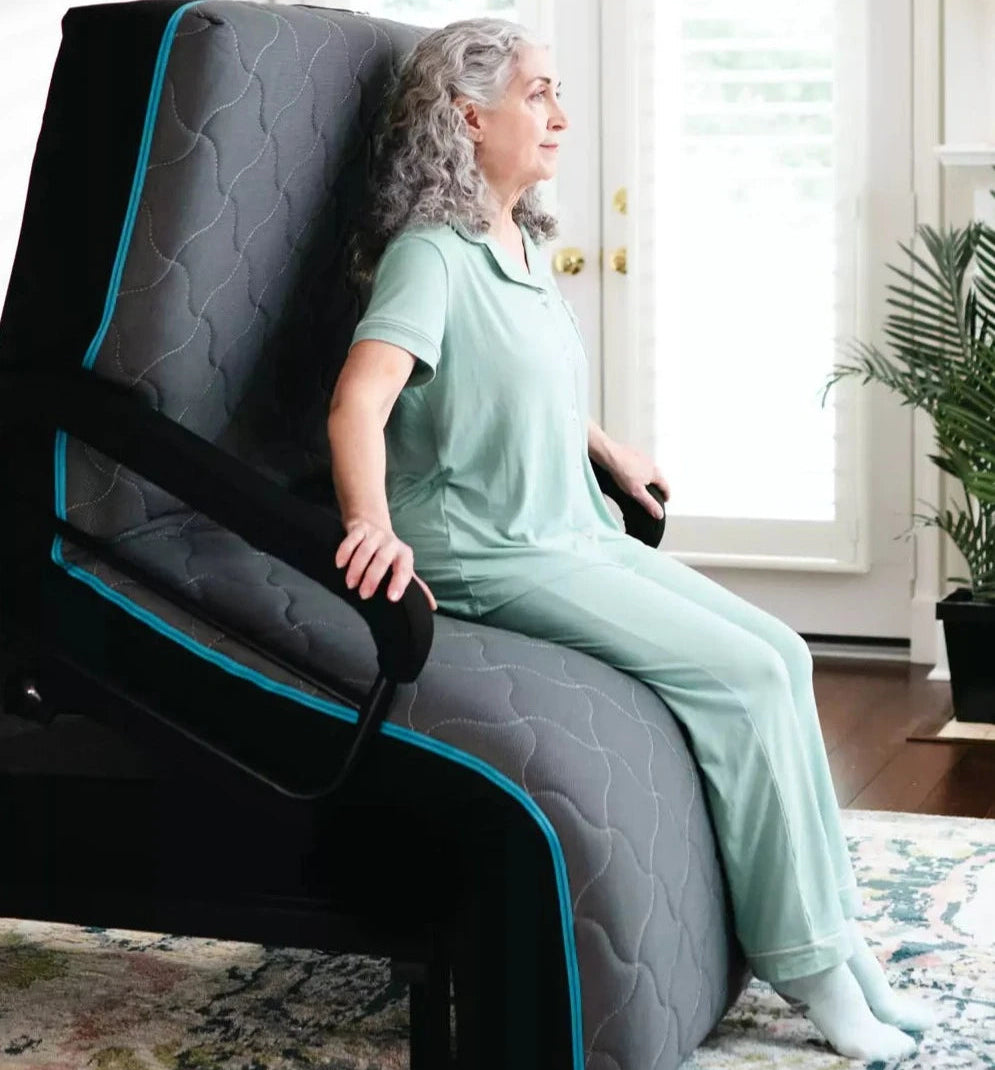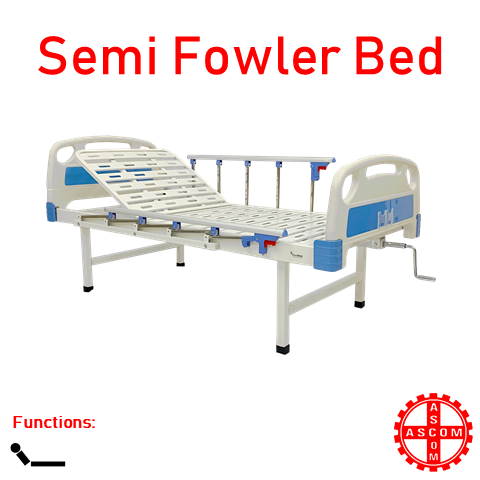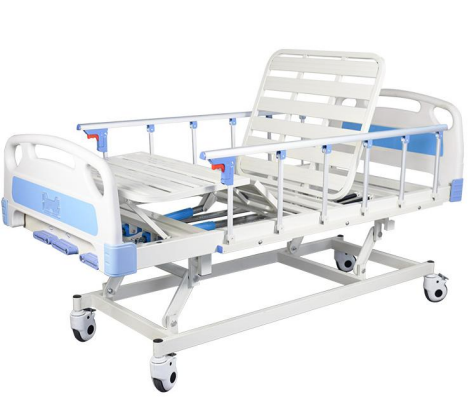The Facts About Hospital Beds For Home Use Revealed
The Facts About Hospital Beds For Home Use Revealed
Blog Article
What Does Hospital Beds For Home Use Mean?
Table of ContentsLittle Known Facts About Hospital Beds For Home Use.About Hospital Beds For Home Use6 Simple Techniques For Hospital Beds For Home UseGetting My Hospital Beds For Home Use To WorkThe Main Principles Of Hospital Beds For Home Use Hospital Beds For Home Use Fundamentals ExplainedLittle Known Questions About Hospital Beds For Home Use.
There are three main types of health center beds: guidebook, semi-electric, and fully-electric. These beds make use of hand cranks to readjust the bed's height and increase and lower the head and the foot.
Semi-electric beds have an electrical motor to increase and decrease the head and foot sections of the bed. Clients and caregivers readjust the positioning by pushing buttons utilizing a hand pendant. The height of the bed is adjusted by hand with a hand crank. Full-electric beds have an electrical motor that can raise the head and foot areas of the bed as well as the whole height and positioning of the bed.
Hospital Beds For Home Use for Dummies
Some models can likewise move right into more settings, such as the Trendelenburg (tilt) setting. There are numerous types of healthcare facility beds, each made to satisfy certain individual demands. Below are some usual kinds: This is one of the most common kind of medical facility bed, made for general medical usage. It has a guidebook or electrically flexible headrest, footrest, and elevation.
Reduced to the ground than a common bed. This kind of bed is developed for bigger clients, with a wider framework and higher weight capacity than a basic bed. This sort of bed is designed specifically for children, with smaller sizes than a basic bed. Special attributes such as full size side rails and anime style.
This type of bed is made for critically ill patients that need open monitoring and specialized medical tools such as ventilators and infusion pumps. This kind of bed is designed for use throughout labor and distribution, with adjustable placements and features to sustain the mom and infant during the birth procedure.
Unknown Facts About Hospital Beds For Home Use
Several function and the devices do broadening traction to different parts of the vertebra and the extremities without relocating the human body. These are just a couple of instances of the kinds of hospital beds readily available. The specific sort of bed used will rely on the client's problem, medical needs, and other factors.
Here is the point you require to understand. A one-function health center bed is a clinical bed that allows a person to relocate only the head or foot section up or down. A 2 feature medical facility bed generally refers to a kind of clinical bed that has two adjustable functions to help clients in health centers or care facilities.

The 10-Minute Rule for Hospital Beds For Home Use
A 7-function ICU bed is a sort of clinical bed that provides a number of adjustable features to sustain critically ill patients in a critical care unit (ICU) (hospital beds for home use). The 7 functions normally consist of: Backrest adjustment: The backrest can be changed to various angles to aid the patient stay up or relax comfortably
Height adjustment: The bed can be increased or lowered to make it less complicated for patients to get in and out of bed, and for caretakers to supply care. Trendelenburg position: The whole bed can be slanted to promote blood circulation and flow in the body. Reverse Trendelenburg position: The bed can additionally be slanted in the contrary direction to advertise blood circulation and circulation in the upper body.
While even more affordable than electrical designs, these beds call for exertion for adjustments. The main advantages of hand-operated beds are their price and reliability, as they do not rely upon electrical power. Nonetheless, the need for hands-on initiative can be a limitation in scenarios where quick adjustments are necessary or where caregivers face physical challenges.
Some Known Details About Hospital Beds For Home Use
They are appropriate for clients who need marginal repositioning for convenience or clinical needs. Semi-electric hospital beds provide an equilibrium of guidebook and electrical controls. The head and foot areas are normally adjusted with electric controls, while the elevation is adjusted by hand. These beds provide an ideal middle ground in between handbook and fully electrical choices, using simplicity of use without the complete cost of electric models.
Semi-electric beds are fit for clients who need moderate changes to the head and foot sections yet can manage without frequent height modifications. This makes additional hints them a cost-efficient service for those seeking comfort and comfort without the need for constant repositioning. Fully electrical health center beds feature electrical controls for seamless adjustments to the height, head, and foot sections.
Specialty medical facility beds, such as ICU beds, long-lasting care beds, and bariatric beds, are thoroughly developed to address particular medical requirements. These beds provide tailored look after varied individual groups, improving both end go to website results and convenience. In the complying with areas, we will check out the primary sorts of specialized hospital beds, describing their particular benefits and applications.
With years of experience in producing electric linear actuators - hospital beds for home use and close collaboration with the medical care market, TiMOTION is well-positioned to supply reliable healthcare options. Our vertically integrated firm takes care of every action of the manufacturing process, from design to actuator assembly, guaranteeing we provide phenomenal value and personalized solutions customized to your details requirements
The Single Strategy To Use For Hospital Beds For Home Use

To find out more regarding integrating these innovations right into your products, contact us today. Further reading:.
Data is sourced from the Medicare Price Record. Accessed January 2025. Temporary intense care hospitals have the greatest average variety of beds at 187. They are one of the most usual kind of healthcare facility in the U.S. and comprise even more than 50% of united state health centers. Kid's medical facilities have 178 beds on average and VA hospitals average 175 beds.

Getting My Hospital Beds For Home Use To Work
A medical facility bed is a bed designed specifically for clinical functions. It is not just a location for people to relax, yet also a system for clinical operations. Unlike common home beds, hospital beds typically have flexible features, which can promote medical personnel to make different modifications according to the demands of people, such as transforming the elevation, inclination, and assistance angle of the back and legs of the bed.
Report this page